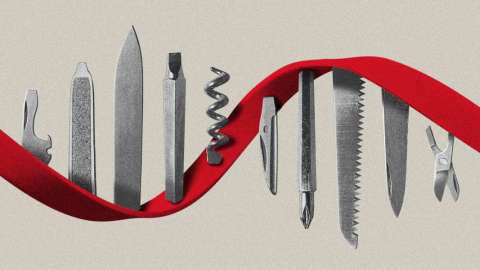
It helps that they are visually more layered and interesting than Google Docs. The strength of Google Docs lies in how simple they are to navigate (if you’ve ever used a word processor, you can manage a Google Doc). But Carrd offers the (restricted) creative potential of web page design. “Carrds are a whole lot easier for the creator—they’re a fairly clean, straightforward, nice-looking product that on any other format, like WordPress, would take a lot of effort,” says Gibson.
That ease means that creators often have multiple Carrds under their belt, creating a sub-economy of design tips and art. Alex, an 18-year-old in western Australia, has made several Carrds and hosts a YouTube channel offering how-tos. “Almost anyone can set it up,” Alex says. “[I] make them for fun.”
Kel has created multiple Carrds too, starting with stan pages for K-pop and Animal Crossing. She’s helped her friends make Carrds, created LGBTQ resources with Carrds, and even created Carrds to showcase her art for school projects.
Explanatory, PowerPoint-like Carrds are especially popular. Gibson says that what we’re witnessing in Carrds and Linktree alike is the transformation of social media from a personality-focused to an anti-influencer mentality. With the newer tools, the focus remains on a cause itself, not on the celebrities affiliated with it.
In fact, these sites are the ideal medium for drawing attention to causes in a fast-moving news cycle, says Paolo Gerbaudo, the director of the Centre for Digital Culture at King’s College London.
“Activism requires access to resources, lists, directories, that are by their nature more ‘sticky’ and less time sensitive,” he says. “Carrd offers a repository of information that can be linked in tweets and posts for information that is not particularly time sensitive, or to gather lists of information all in one place.”
“One-page sites offer a way to escape some of the obsession with instantaneity of social-media conversations and a place where people can build user profiles without using Facebook,” Gerbaudo adds. (Though Carrd now offers the ability to link multiple pages, its bread-and-butter remains the one-pager.)
“Bite-sized”
There’s another reason why Carrds have an advantage over Google Docs as a protest resource: privacy. Only an email address is required to sign up, with no identifying details. Indeed, it was often impossible for me to find Carrd creators through their Carrd itself. When I did get through, emails often came from shadow accounts.
That privacy can smooth the route to education and activism about sensitive topics like gender identity, particularly amidst “cancel culture” in an election year, Gibson says: the “potential offered by anonymity” is important to creators of content about issues like trans or racial identity, who are often vulnerable to trolls.
Carrds are also incredibly easy to share. Links are far more straightforward than the gobbledy-gook of letters and numbers that compose a Google Doc address. The slideshow format is “bite-sized,” as Gibson puts it, making it mobile friendly and well suited to social media.
Ultimately, these platforms are successful in offering concrete ways to act in an era when direct interaction is often nearly impossible because of the pandemic. “As much as people across generations might be dedicated to protests and causes, I think it’s hard to find ways to do the work of social change,” says Gibson. “It’s a better strategy to focus on the issues, and Carrds allow them [activists and creators] to focus on specific issues and organize in ways that are probably safer and point to specific and concrete ways to act.”
AJ is still surprised by his tool’s evolution. “I’ve been floored,” he says. “I didn’t anticipate it. It feels like a throwback [to the early internet]. You can question the quality of the design, but you can’t question the authenticity of it. It’s nice to enable people to do that.”






Recent Comments